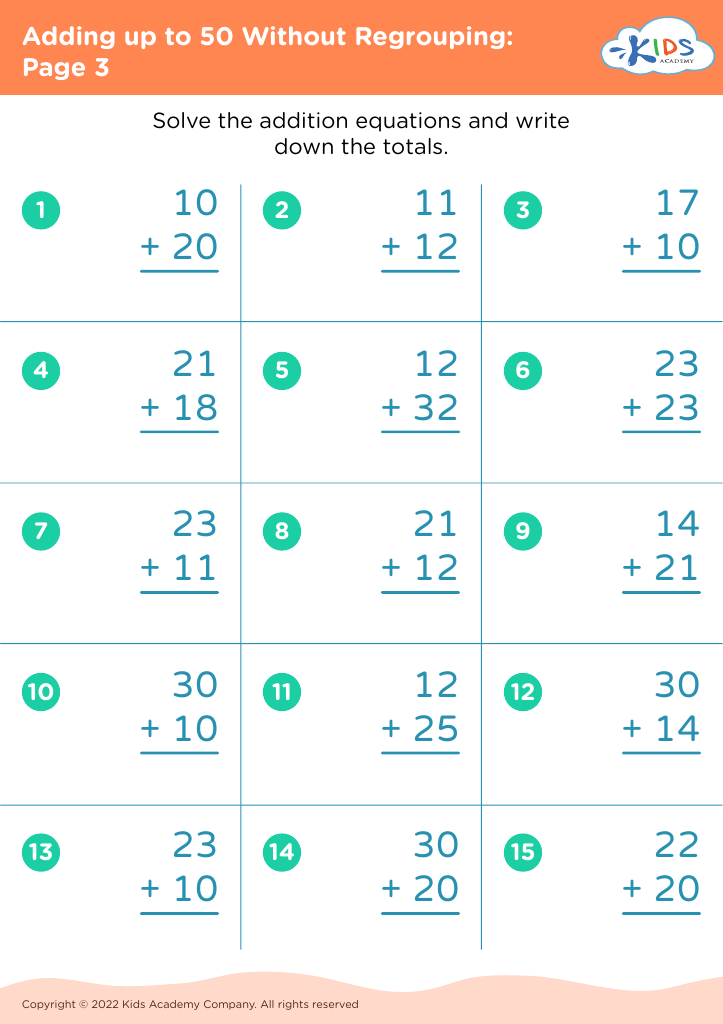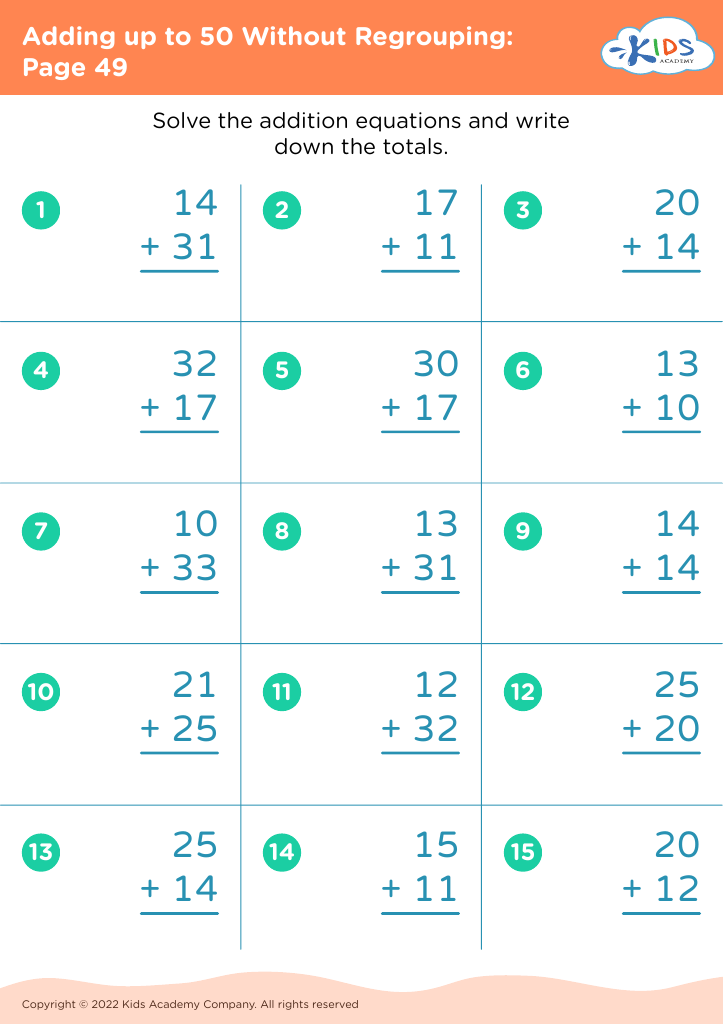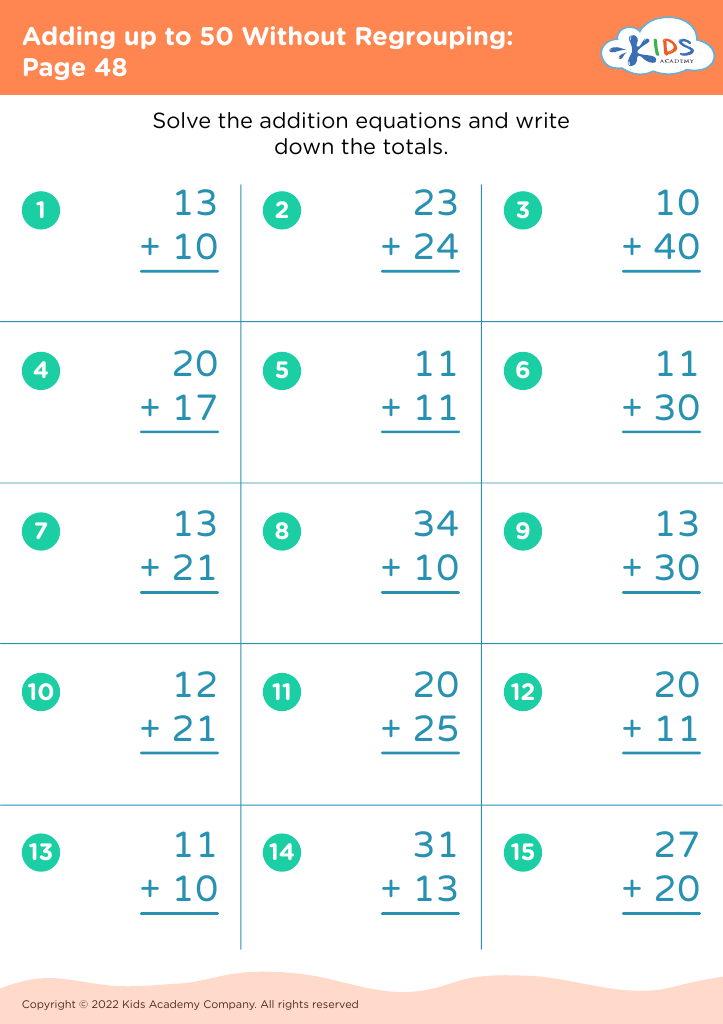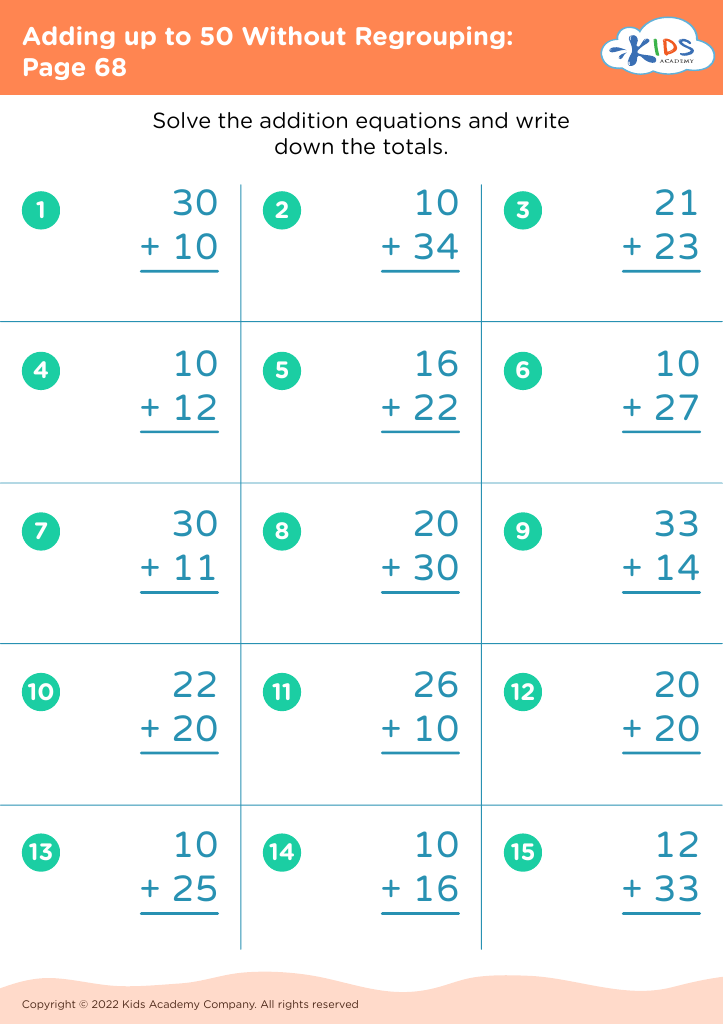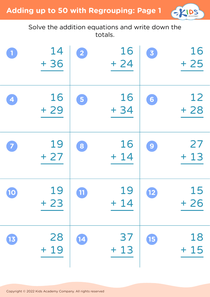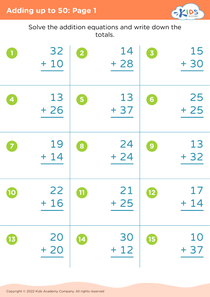Recognizing shapes Adding up to 50 Without Regrouping Worksheets for Ages 3-7
5 filtered results
-
From - To
Unlock your child's potential with our "Recognizing Shapes Adding up to 50 Without Regrouping Worksheets" designed for ages 3-7. These engaging, educational worksheets combine fundamental math skills with visual recognition exercises to help young learners excel. By incorporating colorful shape recognitions into math problems, we make learning both fun and effective. Ideal for preschoolers and early elementary students, our worksheets build a strong foundation in addition and geometry, without the complexity of regrouping. Encourage confidence in their math abilities while enhancing their understanding of shapes—perfect for at-home practice or classroom enrichment!
Recognizing shapes and basic addition without regrouping are foundational skills for young children, ages 3-7, that significantly impact their cognitive and academic development. When parents or teachers prioritize recognizing shapes, such as circles, squares, and triangles, they are helping children develop visual-spatial skills, critical thinking, and the ability to recognize patterns. These skills form the basis for more complex mathematical concepts and are widely applicable in everyday life, from solving puzzles to understanding geometry in later years.
Adding up to 50 without regrouping is equally crucial. This task trains children in basic arithmetic, honing their numeral recognition, counting skills, and ability to perform simple calculations confidently. Mathematically, it sets the stage for more advanced operations, such as adding with regrouping, subtraction, multiplication, and division. These early math experiences build a positive attitude toward mathematics, reduce anxiety, and increase the likelihood of future academic success in STEM fields.
Both shape recognition and basic addition exercises foster attention to detail, fine motor skills (through writing numbers or drawing shapes), and linguistic abilities, as children must often articulate their thought processes. By focusing on these foundational skills, parents and teachers ensure that children develop a solid educational foundation, enhancing both immediate learning and future academic potential.


